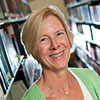This article is more than 5 years old.
Today, a full day of discussion and presentations continued. In the small group discussion this morning, we spent an hour trying to frame a mini-case written by one of our group members. Earlier this summer, each person was asked to submit a mini-case in which we described a challenging situation in which we are involved. Each morning, we pick one to “dissect.”
In the large group presentations today, Jim Honan led us through a case study that helped to teach how to monitor institutional performance. We looked at case written about UNITEC Institute of Technology‘s plan and process to systematically evaluate the viability of their programs as part of a strategy to be competitive and gain university status. In examining the case we talked about contexts for planning (external environment and competition, leadership, resource allocation, and governance & decision-making) and how these contexts are all occurring simultaneously so all must be included as you consider how to proceed.
Our second session, with Joan Gallos, was spent talking about 4 leadership challenges
- How do we find vision for ourselves so that we can offer it to others?
- What do we bring to advance that vision?
- How do we identify and involve others to advance a shared vision?
- How do we give personal voice to the vision so that others take up the call?
For me, this was the session where I felt less experience. We were asked to talk about our greatest leadership moment and our most disappointing and then try to describe what differences we saw between the two. We heard terms including: “soul”, “creativity”, “values”, “charisma.” The example shown to us was Martin Luther King’s “I Have a Dream” speech. How can you ever think you’d compare with that??
But there were some good, practical aspects also. We were introduced to Malcolm Gladwell’s The Tipping Point: How Little Things Make a Big Difference. We learned about important people alliances to help deliver your message (the power of social context): connectors (people who have major social relationships established across many different groups), mavens (people who are seen as knowledgeable and respected), and salespeople (those who are seen as charismatic and influential). It made me start to consider who those people might be at Wake Forest?
Our afternoon session was led by Maureen Sullivan, who focused us in on library-specific issues. We spent 2 hours considering critical forces for change in the academic library; actually, things we are all familiar with, thanks to our strategic planning process: students as customers, shifts from teaching to learning, changes in the nature of our collections, scholarly communications, changing demographics, ownership to access, etc. Maureen showed a You Tube video, A Vision of Students Today, that helped to get her point across.
The nice surprise for the day, however, came with the news that one of the Widener librarians in the Institute had made arrangements for all of us to be admitted to Widener Library for a tour. As I mentioned a few days ago, one needs a Harvard ID to gain access. Any other exceptions have to be specially approved. So you’ll see the picture above shows my special pass. The other picture is a screen capture of the virtual tour of the library on the Harvard website, as they do not allow photographs. The building is beautiful, but our access was restricted to a very small area. We were able to admire the Memorial Room, which is in honor of Harry Widener, for whom the library is named. As we learned on our campus tour yesterday, Harry was a graduate of Harvard, and was a bibliophile. He obtained a copy of the Gutenberg Bible which is on display in the room. Harry perished on the Titanic and his mother donated the money to build Widener Library. It had a few strings attached: The footprint of the library can never change, or else ownership of the building reverts to the city of Cambridge. This means that they are not able to add on or alter the outside dimensions of the building. So stacks go underground 5 stories. The Memorial Room I mentioned above is dedicated to Harry. It is a requirement that fresh flowers are maintained in the room and nobody is allowed in there to read. That is because the room is reserved for use by Harry’s ghost! But we got to stand at the entrance, see the flowers, and the bible. It was an impressive room. We also got to see two murals painted by John Singer Sargent.
The other areas we were able to see were the reading room and reference on the second floor, and the periodicals room and circulation on the main level. I must make mention of the fact that, in the circulation room, there is an information desk staffed M-F from 9-5 by a reference librarian, to help users who might be intimated by the prospect of 50 miles of shelves and 3 million volumes.



2 Comments on ‘Leadership Institute: Monitoring Institutional Performance, Vision & Voice and More’
Hi Susan- You sound busy- but it’s a good kind of business. I loved being near Harvard last fall. I saw Ken Burns at the Congregational Church across the street, ate lunch at the Au Bon Pain restaurant, and soaked up the general atmosphere- it’s Harvard, right? I also had a librarian in my class at the the North Bennett Street School who worked at the Widener Library. The Freedom Trail was fun too!
Susan-
I’m almost finished with “The Tipping Point” and I have also begun to wonder who in the library and on campus are the mavens and connectors. An interesting book!